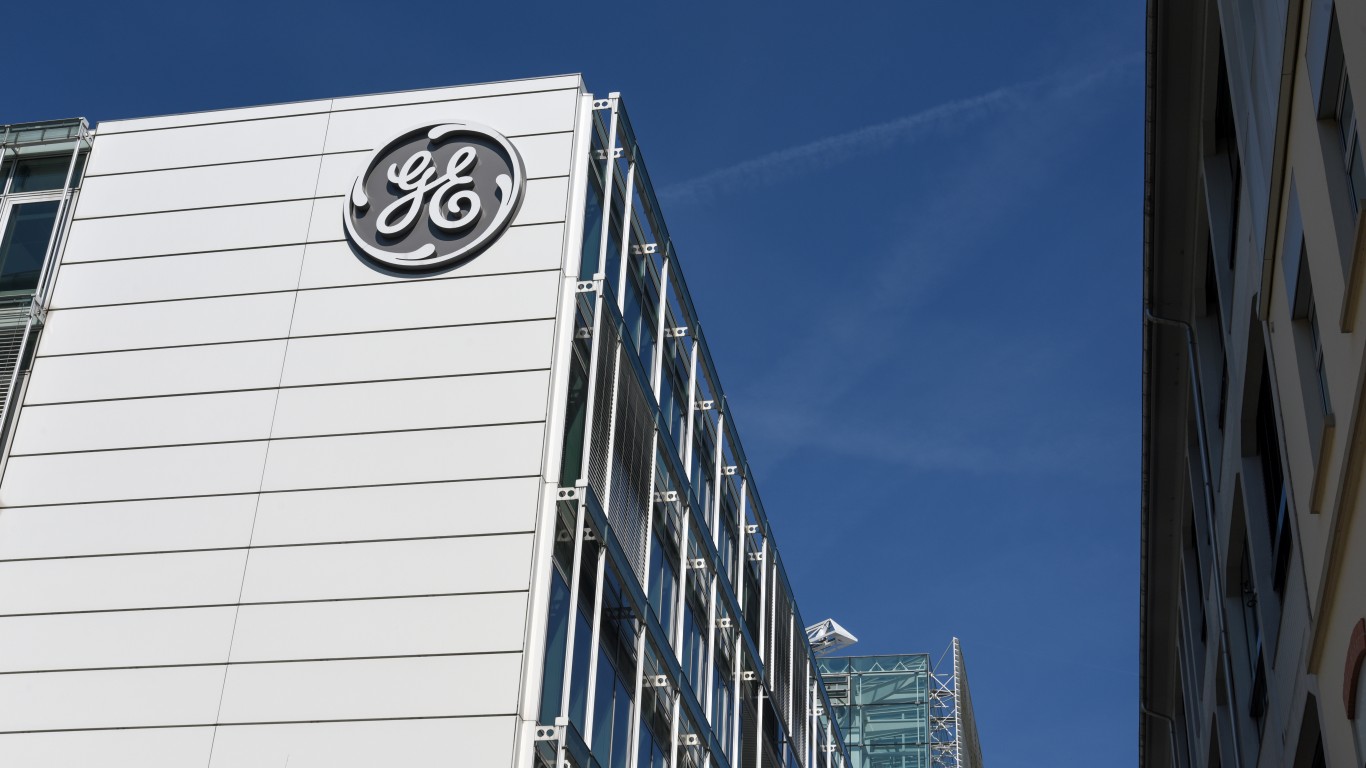
General Electric Co. (NYSE: GE) reported third-quarter results before markets opened Wednesday. The conglomerate posted an adjusted loss per share of $0.06 on revenues of $19.4 billion. In the same period a year ago, GE reported adjusted EPS of $0.15 on revenues of $23.4 billion. Second-quarter results also compare to the consensus estimates for a loss per share of $0.04 on revenues of $21.8 billion.
Although the headline numbers are mixed, CEO Larry Culp gets to the better news quickly: “[W]e expect Industrial free cash flow to be at least $2.5 billion in the fourth quarter and positive in 2021. We remain focused on unlocking upside potential for the long term.” In the first two quarters, free cash flow in the company’s Industrial division totaled negative $4.3 billion. In the current quarter, adjusted free cash flow totaled $514 billion.
On an adjusted basis, net debt has dropped from $47.9 billion at the end of last year to $34.6 billion at the end of the third quarter. The largest chunk of that was a $7.2 billion decline in GE Capital’s debt that had been assumed by the company in 2019.
The Industrial division’s adjusted organic revenue totaled $17.9 billion in the quarter, a drop of 12% year over year. Adjusted profit margin fell by 440 basis points to 5.6%. Excluded in the adjusted totals were $400 million in write-offs in the Steam segment and $200 million in an impairment to its aircraft leasing business.
The company’s Power segment reported revenue up year over year by 3% to $4.0 billion and new orders down 12% to $3.4 billion. The segment posted a net profit of $150 million, compared with a loss of $144 million in the year-ago quarter.
In the Aviation segment, revenue fell 39% to $4.9 billion and new orders fell by 54% to $4.1 billion. The segment posted a profit for the quarter of $356 million compared to a profit of $1.7 billion last year. The decline was attributed to fewer 385 engine sales, lower volume on commercial spare parts and commercial spare engine shipments and decreased shop visits in service agreements.
In the Renewable Energy segment, GE posted a 2% improvement in revenue to $4.5 billion, along with a 21% drop in new orders to $4.0 billion. The segment’s net profit of $5 million was attributed to improved pricing, cost reductions and cost deflation in the onshore wind business.
The Healthcare segment posted revenue of $4.6 billion, down 7% year over year, and new orders of $4.1 billion, down 20%. Net profit fell by 21% to $765 million.
GE Capital posted a loss of $52 million on continuing operations, largely due to the absence of a write-down taken in 2019. Including discontinued operations, the segment lost $78 million in the quarter.
GE did not offer guidance, but analysts expect EPS of $0.07 and revenue of $21.8 billion in the fourth quarter. For the full year, analysts are looking for a net loss per share of $0.04 on revenue of $78.81 billion.
Shares traded up 7.9% to $7.66 early Wednesday. The stock’s 52-week range is $5.48 to $13.26, and the consensus price target is $8.01.
Investors like the free cash flow numbers because that could result in an increase to GE’s $0.04 annual dividend next year.
It’s Your Money, Your Future—Own It (sponsor)
Retirement can be daunting, but it doesn’t need to be.
Imagine having an expert in your corner to help you with your financial goals. Someone to help you determine if you’re ahead, behind, or right on track. With SmartAsset, that’s not just a dream—it’s reality. This free tool connects you with pre-screened financial advisors who work in your best interests. It’s quick, it’s easy, so take the leap today and start planning smarter!
Don’t waste another minute; get started right here and help your retirement dreams become a retirement reality.
Thank you for reading! Have some feedback for us?
Contact the 24/7 Wall St. editorial team.




